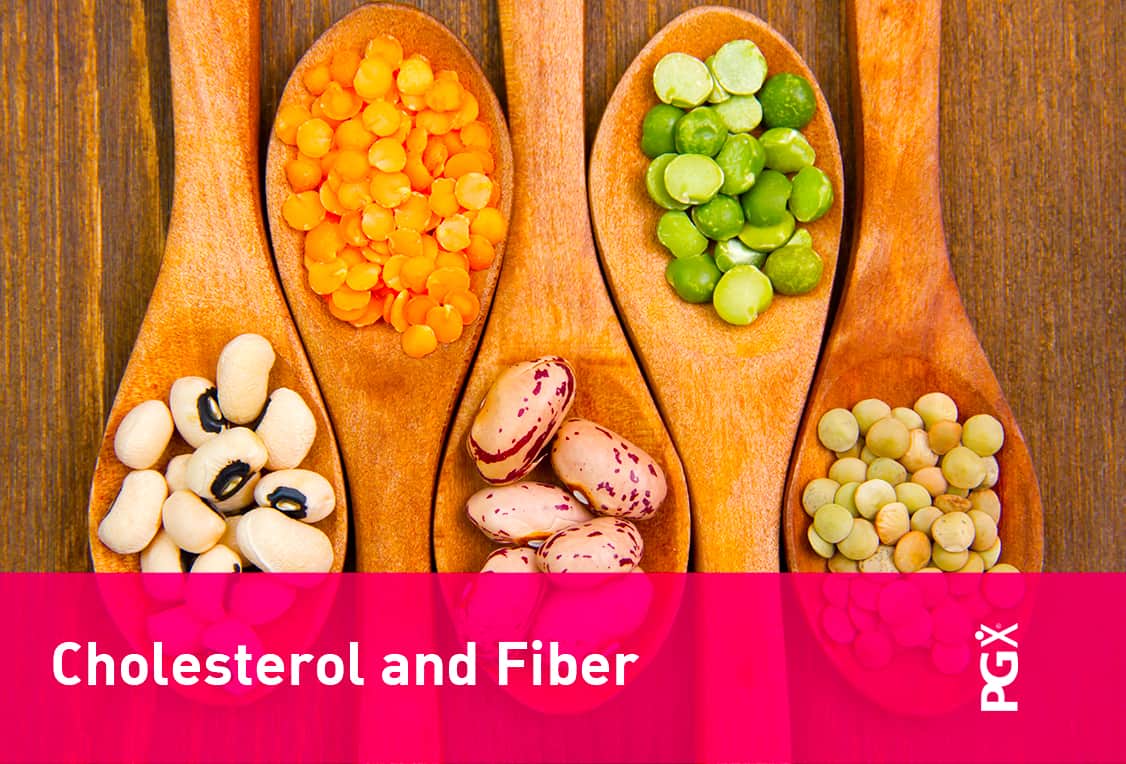Cholesterol and Fiber
Experts recommend that all men should have their cholesterol checked before the age of 35, and that women begin having regular cholesterol checks by age 45.
A complete cholesterol check, which can also be referred to as a lipid panel or profile, looks at the amount of low-density lipoprotein (LDL), high-density lipoprotein (HDL), total cholesterol and triglyceride levels in the blood. It is beneficial to have a good level of HDL cholesterol as this is the type that helps remove LDL cholesterol from the blood.
Triglycerides, meanwhile, are formed from excess calories from sugar and fat and are stored in fat cells.
What is a Healthy Cholesterol Level?
Recommended levels of cholesterol and triglycerides for adults are as follows (measured in milligrams per deciliter of blood):
- LDL: 70-130 mg/dL (the lower the number, the better)
- HDL: more than 40-60 mg/dL (the higher the number, the better)
- Total cholesterol: less than 200 mg/dL (the lower the number, the better)
- Triglycerides: 10-150 mg/dL (the lower the number, the better)
Here are some things you can do to help support healthy cholesterol levels:
- Get regular exercise
- Reduce alcohol intake
- Quit smoking
- Eat a high-fiber diet
- Reduce intake of fat and sugar
Fiber and Cholesterol
Dietary fiber and functional fiber are thought to bind to fat and block its absorption. Fiber also helps the body regulate blood sugar by slowing the rate at which carbohydrates are broken down and enter the bloodstream.‡
Fiber also helps people feel fuller for longer, thereby helping prevent cravings and minimize overall food intake. This means fiber may also help support the liver by supporting healthy production of cholesterol and triglycerides in response to calorie intake and blood sugar.‡
Fiber and Plant-Based Proteins
One of the easiest ways to reduce fat intake and increase fiber consumption is to replace animal-derived foods, such as meat and cheese, with fiber-rich options, such as beans, chickpeas, lentils, and legumes. These foods provide protein and fiber and they’re packed with phytonutrients that have antioxidant activity, offering additional support for cardiovascular health.‡
Considering that meat and cheese contain no fiber, but do contain saturated fat, switching to plant-based sources of protein seems pretty wise all-round. Take a look at the fiber figures per half cup of the following foods and it’s easy to see how quickly you can achieve the recommended fiber intake:
- Chickpeas – 17.5 g
- Lentils – 8 g
- Adzuki beans – 8.5 g
- Oats – 8 g
- Quinoa – 2.5g
- Brown rice – 1.75 g
Even a small banana contains 2.6 g of fiber, while an average sized apple contains 4.4 g!
A healthy breakfast of oatmeal with fresh slices of apple and banana could jump start your day by providing some 15 g of fiber. Enjoy a chickpea and vegetable curry with brown rice for dinner, or some homemade chickpea fries with a salad and a white bean and parsley dip, and you’ve already met your daily minimum fiber intake if you’re a woman! Have a three-bean quinoa salad for lunch and you’re easily topping 40 g of fiber.
Fiber Supplements
Of course, there are days where it may be a struggle to eat well, which is where functional fiber supplements come in handy. Adding just a scoop of PGX® to your morning smoothie, or even to your glass of water at lunch, can help keep you stay on track to meet your daily target for fiber.*
*Drink additional water (8 fl. oz.) after ingesting PGX®. If you are taking medications, take one hour prior to or two hours after taking PGX®.
‡ This statement has not been evaluated by the Food and Drug Administration. This product is not intended to diagnose, treat, cure or prevent any disease.

